Why Can’t I Drill into Stud?

When it comes to hanging shelves, mirrors, or other heavy items on a wall, many people turn to drilling into studs for added support and stability. However, there are situations where you may find it difficult or impossible to drill into a stud. Understanding why this happens can help you find alternative solutions and ensure the safety of your wall and belongings.
Studs are typically made of wood and are an important part of the wall’s framework. They provide extra strength and stability to the wall, making them an ideal anchor point for heavy items. However, studs are usually spaced apart at regular intervals, typically 16 or 24 inches apart. This means that if you’re trying to hang something in a specific location, there may not be a stud there to drill into.
Additionally, there are certain areas of a wall where you may encounter obstacles that make it difficult or impossible to drill into a stud. These can include electrical wires, pipes, insulation, or other hidden structures that you don’t want to damage. It’s important to avoid drilling through these obstacles, as it can lead to serious damage or even pose a safety hazard.
In situations where you can’t drill into a stud, there are alternative solutions you can consider. One option is to use wall anchors, which are designed to provide extra support and stability in drywall or other materials where there is no stud. Another option is to use a French cleat system, which involves attaching a wooden cleat to the wall and hanging your item on a complementary cleat attached to the item itself. These alternative methods can help you safely hang heavy items and avoid damaging your walls or hidden structures.
The Importance of Drill Bit Selection
When it comes to drilling into a stud, selecting the right drill bit is crucial. The drill bit you choose can have a significant impact on the success of your drilling project. Here are a few reasons why drill bit selection is so important:
1. Material Compatibility
Drill bits come in different materials, such as high-speed steel, carbide, and cobalt. Each material is designed for specific applications and has different properties. For drilling into studs, it is important to use a drill bit that is compatible with the material of the stud. This ensures that the drill bit can effectively cut through the stud without breaking or wearing out prematurely.
2. Size and Diameter
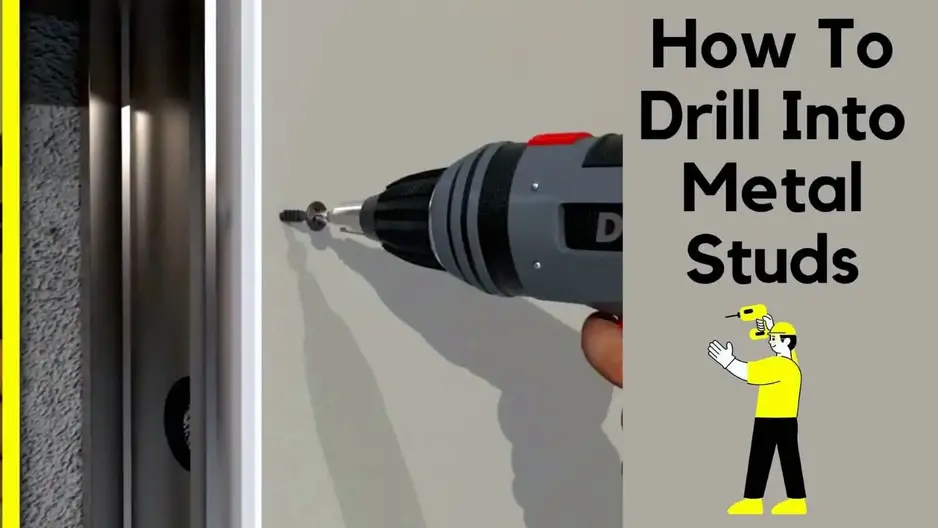
The size and diameter of the drill bit also play a crucial role in drilling into a stud. It is essential to select a drill bit that is the right size for the hole you need to drill. If the drill bit is too small, it may not be able to create a hole wide enough for your needs. On the other hand, if the drill bit is too large, it may cause the stud to split or damage the surrounding areas. Additionally, using a drill bit with the wrong diameter can result in an unstable and weak hole.
3. Type of Drill Bit
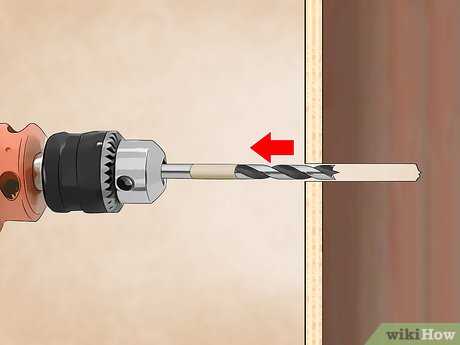
There are various types of drill bits available, including twist drill bits, spade bits, and auger bits. Each type of drill bit is designed for specific applications and has its advantages and disadvantages. When drilling into a stud, it is important to choose a drill bit that is suitable for the task. For example, using a spade bit can provide faster drilling, while an auger bit might offer better precision and control.
4. Shank Design
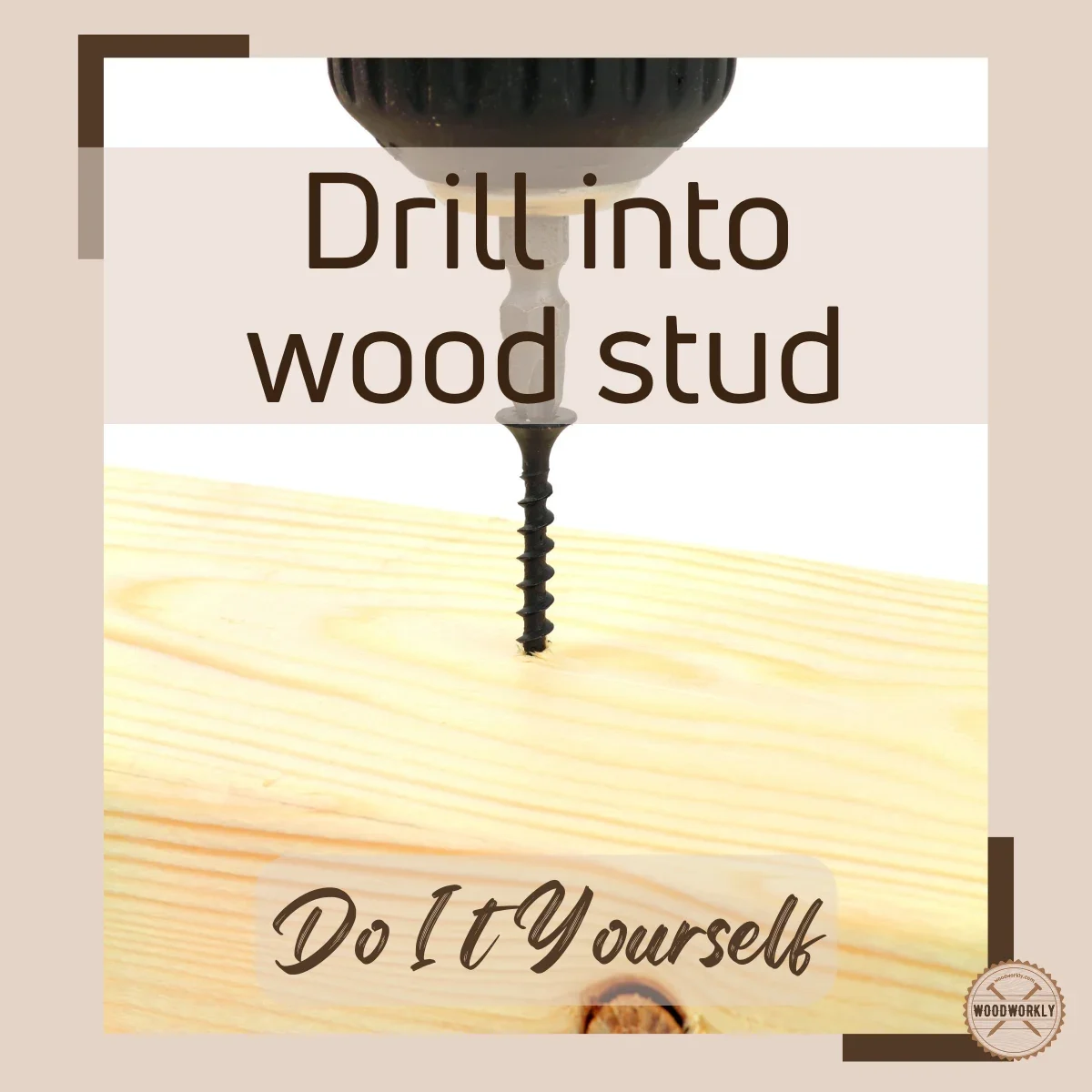
The shank design of the drill bit also affects its performance and stability. The shank is the part of the drill bit that attaches to the drill. It is important to ensure that the shank is compatible with your drill and has a secure fit. Using a drill bit with a poorly designed or incompatible shank can result in wobbling, reduced drilling efficiency, and potentially even damage to the drill or the stud.
5. Quality and Durability
Finally, the quality and durability of the drill bit are crucial factors to consider. High-quality drill bits are made from materials that are more resistant to wear and can provide better performance and longevity. Using a low-quality drill bit can lead to premature wear, breakage, and the need for frequent replacements, which can be costly and time-consuming.
In conclusion, selecting the right drill bit is essential for drilling into a stud effectively and safely. Consider factors such as material compatibility, size and diameter, type of drill bit, shank design, and quality when choosing a drill bit for your project. By making the right choice, you can ensure successful drilling and achieve the desired results without any issues.
The Role of Studs in Construction
Introduction
In construction, studs play a crucial role in providing structural support and stability to various types of buildings. These vertical beams, typically made of wood or metal, are an integral part of the framing system in both residential and commercial construction projects. Understanding the importance of studs is essential for anyone involved in the construction industry.
Structural Support
The primary function of studs is to provide structural support to the walls of a building. They serve as load-bearing members, helping to transfer the weight of the roof, floors, and other elements to the foundation. By distributing the load evenly, studs prevent the walls from sagging or collapsing under the weight. This structural integrity is vital for the overall stability of a building.
Partition Walls
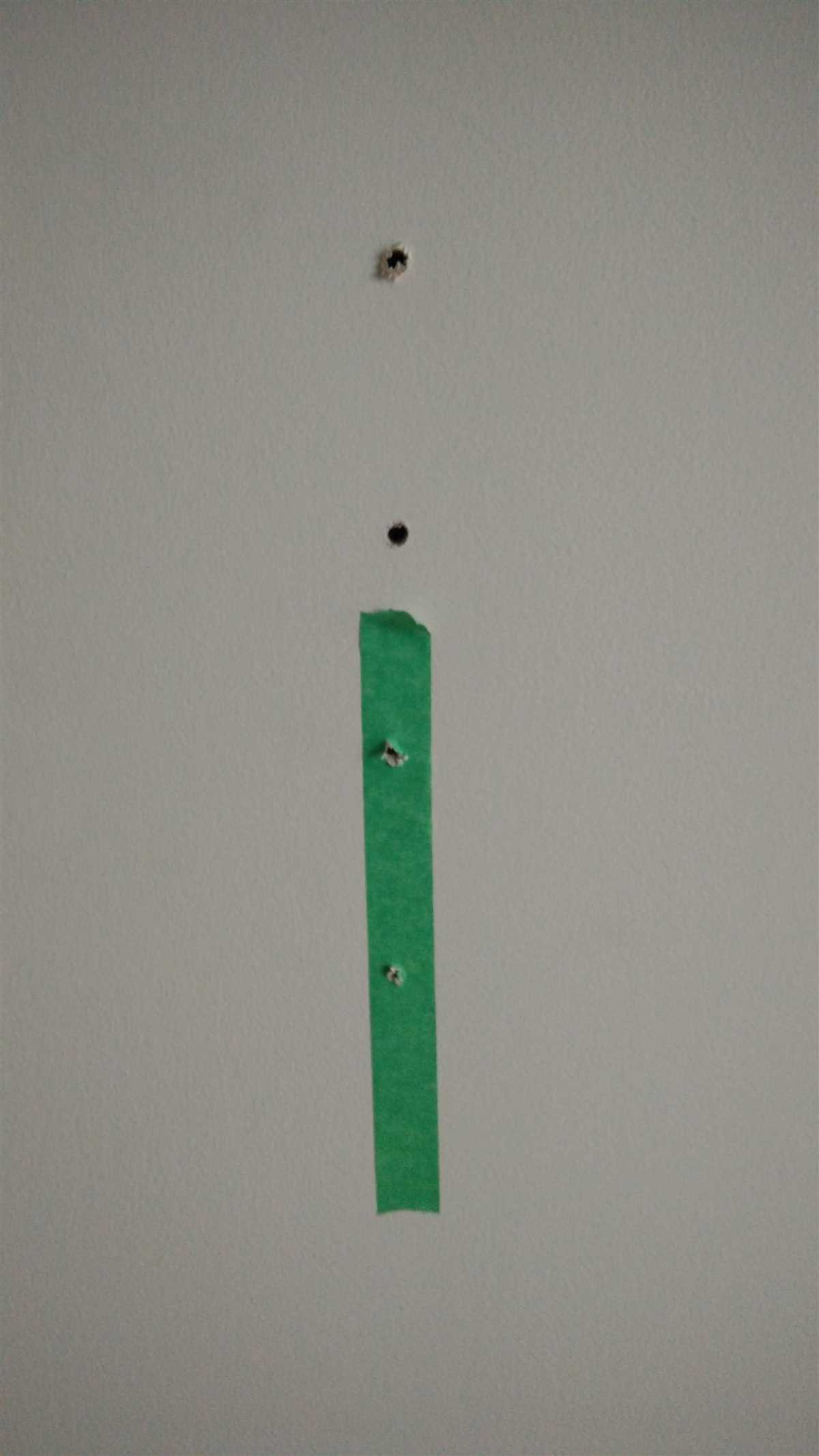
Studs are also used to create partition walls within a building. These walls separate different rooms or areas and are not load-bearing. In a residential setting, partition walls divide bedrooms, bathrooms, and other spaces. In a commercial setting, they divide offices, conference rooms, and other areas. Studs provide the framework for these walls, allowing for the installation of insulation, drywall, and other finishes.
Installation of Utilities
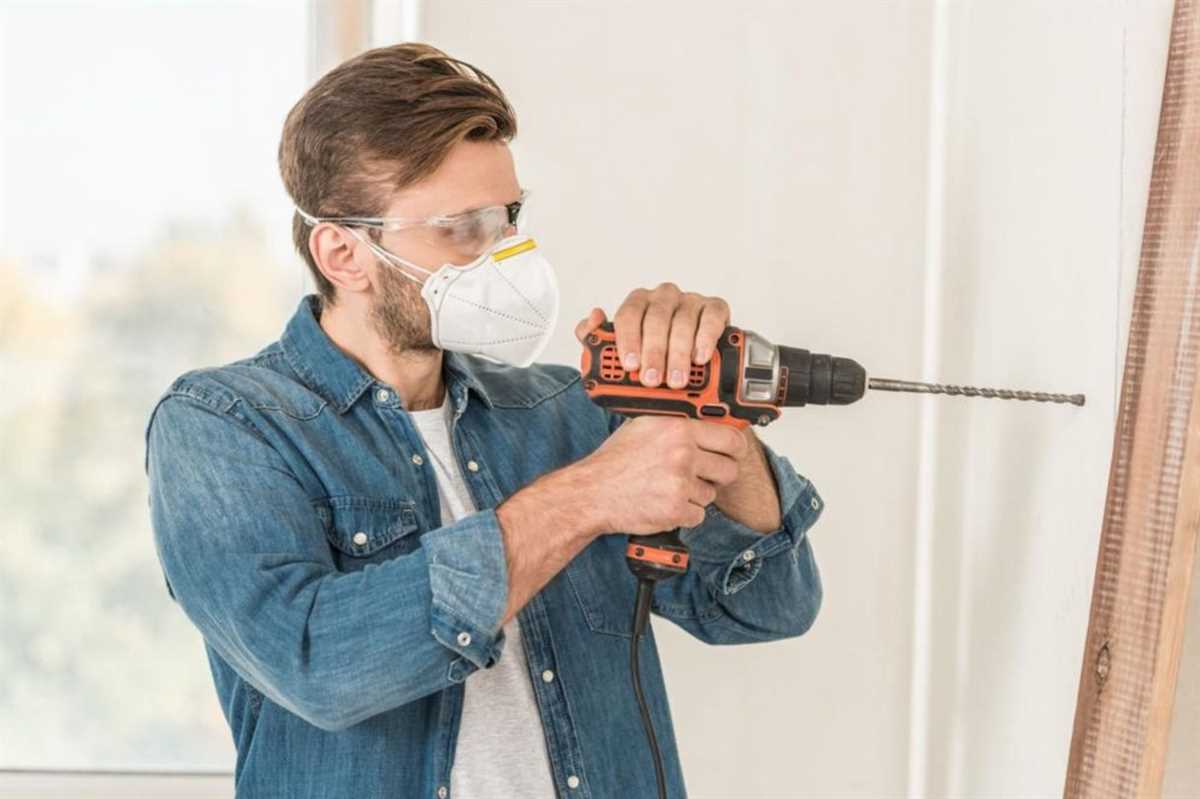
Studs play a role in the installation of electrical wiring, plumbing, and other utilities. By providing a framework for the walls, studs create pathways and spaces behind the finished walls where these utilities can be routed. This allows for the efficient and concealed installation of wiring, pipes, and other essential services within a building.
Conclusion
Studs are a critical component in the construction of buildings, providing structural support, creating partition walls, and facilitating the installation of utilities. Understanding the role of studs is vital for architects, engineers, contractors, and anyone involved in the construction industry to ensure the safety, stability, and functionality of buildings.
Factors Making It Difficult to Drill into Stud
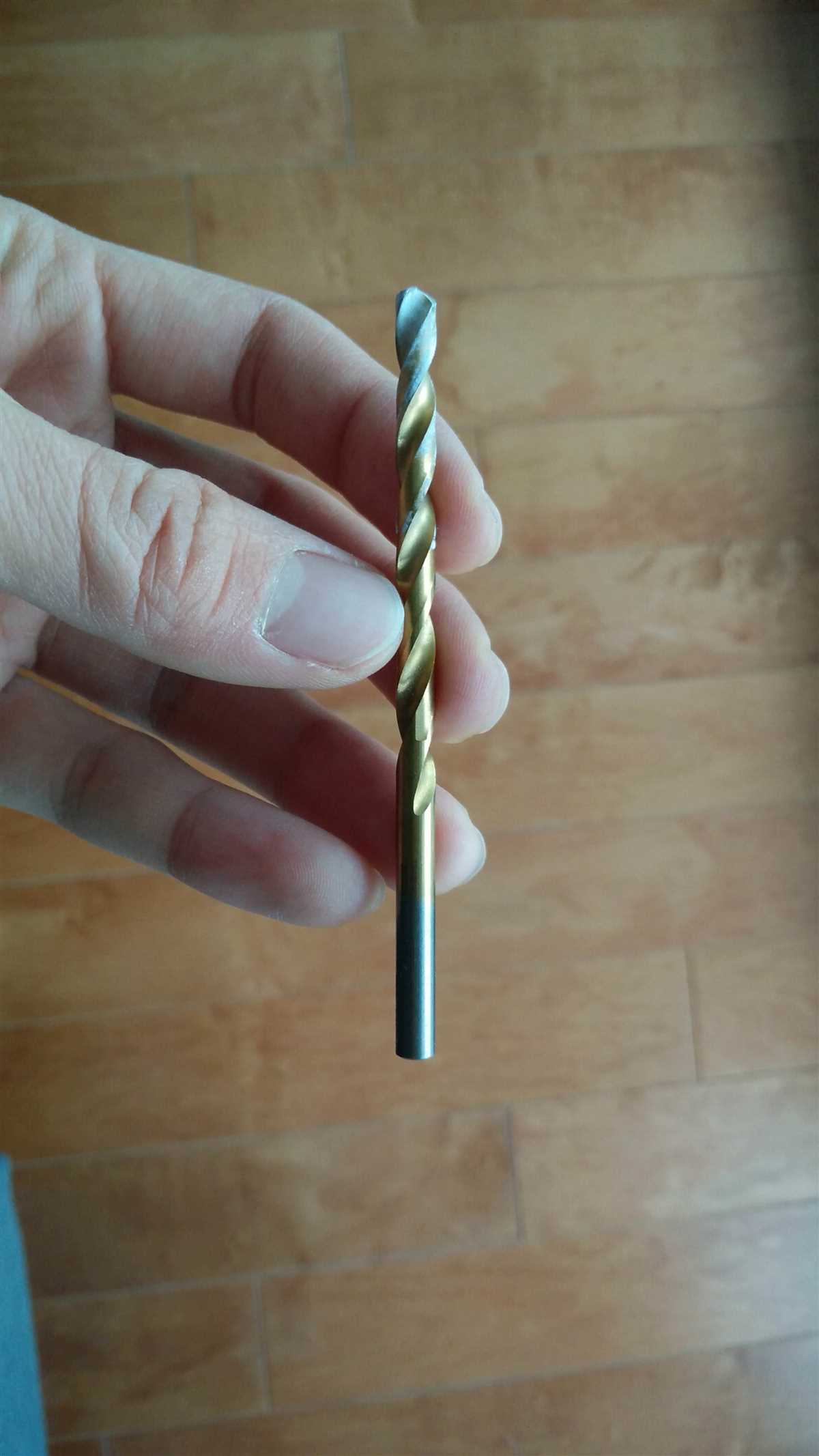
Drilling into a stud can sometimes be a challenge due to several factors:
- Hidden Studs: Studs are typically placed behind walls and are not easily visible. This makes it difficult to accurately locate the stud before drilling.
- Stud Spacing: Studs are typically spaced at regular intervals, usually 16 or 24 inches apart. If you are not aware of the spacing, you may miss the stud and end up drilling into the empty space between studs.
- Hardwood Studs: Some older homes may have studs made of hardwood, such as oak or maple. These studs are harder and denser than softwood studs, making them more difficult to drill into.
- Obstructions: There may be electrical wires, plumbing pipes, or other obstructions running through the stud, making it risky to drill into it. Hitting an obstruction could damage the wiring or pipes, causing potential hazards.
- Inadequate Drill Power: If you are using a low-powered drill or a drill with a dull bit, it may struggle to penetrate the stud. This can result in the drill bit slipping or not making a clean hole.
- Incorrect Drill Bit: Using the wrong type or size of drill bit can also make it difficult to drill into the stud. For example, a masonry bit is designed for drilling into concrete, not wood, and will not work effectively on a stud.
- Angle of Drilling: Drilling into a stud at the wrong angle can also make it difficult to penetrate. It is essential to drill perpendicular to the surface of the wall to ensure a clean and accurate hole.
Considering these factors and taking the necessary precautions can help make drilling into a stud a more successful and efficient process.
Toughness of Stud Material
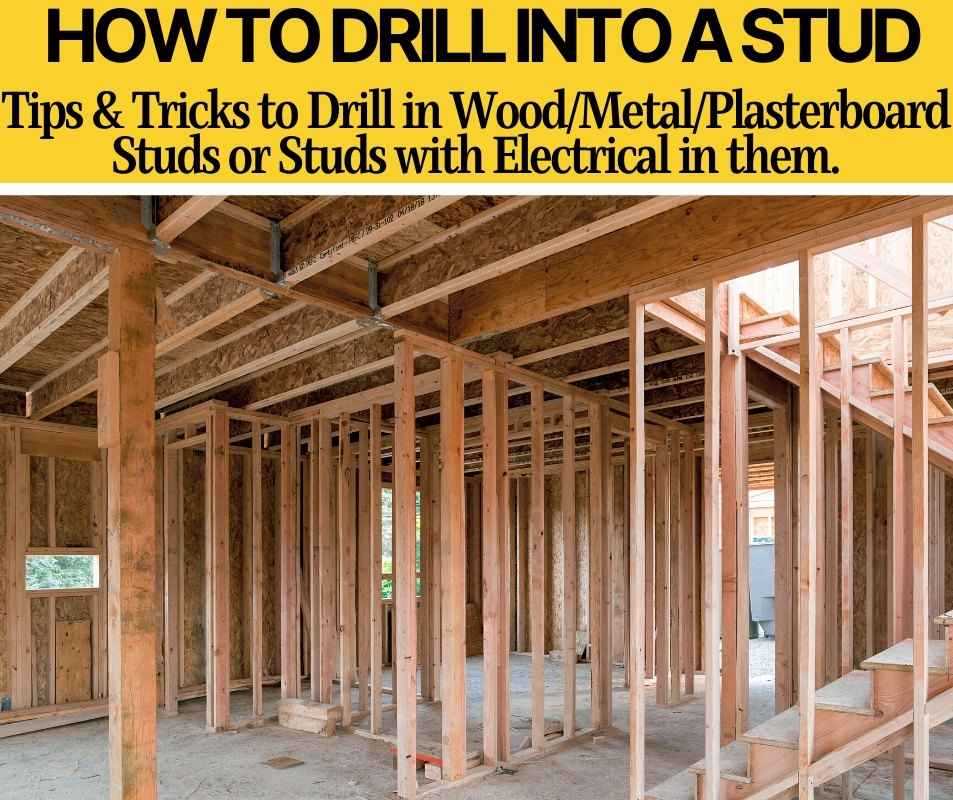
When it comes to drilling into a stud, one of the reasons you may be experiencing difficulty is the toughness of the stud material. Studs are typically made from a variety of materials, including wood, metal, or composite materials. The toughness of the stud material can vary depending on its composition.
Wooden studs are commonly used in residential construction. While wood is generally easier to drill into compared to metal or composite materials, certain types of wood can still be tough to drill through. Hardwoods, such as oak or maple, tend to be denser and harder than softwoods like pine or fir. If you are drilling into a hardwood stud, you may need a more powerful drill or a specialized drill bit designed for dense materials.
Metal studs, often found in commercial or industrial buildings, can be extremely tough to drill into. Metal studs are typically made from steel or aluminum and are designed to be strong and durable. The thickness and hardness of the metal can make it challenging to drill through without the appropriate tools and drill bits. In some cases, you may need to use a metal cutting drill bit or a carbide-tipped drill bit specifically designed for metal drilling.
Composite studs, made from materials like fiberglass or plastic, can also pose challenges when drilling. These materials can be dense and tough, making it difficult to drill through without the right tools. Specialized drill bits or drills with adjustable torque settings may be necessary to successfully drill into composite studs.
Before attempting to drill into a stud, it’s important to identify the material it is made from. This can help you determine the appropriate tools and techniques needed to drill successfully. Using the wrong tools or applying too much force can damage your drill bit or the stud itself, so it’s essential to use caution and choose the correct equipment for the job.
Poor Drill Bit Performance
When drilling into a stud, poor drill bit performance can be a frustrating issue. There are various reasons why a drill bit may not perform well, including:
- Blunt or worn out drill bit: Over time, drill bits can become dull or worn out, which can result in inefficient drilling. It is important to regularly inspect and replace drill bits when necessary.
- Low-quality drill bit: Using a low-quality drill bit can also lead to poor performance. These drill bits may not be strong enough to penetrate the stud properly, resulting in slow or ineffective drilling.
- Incorrect drill bit type: Using the wrong type of drill bit for the material you are drilling into can also affect performance. Different drill bits are designed for specific materials, such as wood, metal, or concrete, and using the wrong type can cause the drill bit to struggle or break.
To improve drill bit performance, consider the following steps:
- Inspect the drill bit: Check if the drill bit is sharp and in good condition. If it is dull or worn out, replace it with a new one.
- Invest in quality drill bits: Consider investing in high-quality drill bits that are designed for the specific materials you commonly work with. These drill bits are often more durable and provide better drilling performance.
- Choose the correct drill bit type: Ensure you are using the right type of drill bit for the material you are drilling into. Consult the drill bit manufacturer’s recommendations or seek professional advice if you are unsure.
- Apply proper drilling technique: Use steady pressure and avoid applying too much force or torque while drilling. Let the drill bit do the work and avoid overheating it.
By addressing these factors, you can improve drill bit performance when drilling into studs.
Inadequate Drilling Technique
One possible reason you can’t drill into a stud is that you are using an inadequate drilling technique. Here are some common mistakes and tips for avoiding them:
-
Wrong Drill Bit: Using the wrong type or size of drill bit can make it difficult to penetrate the stud. Make sure you are using a sharp and appropriate drill bit for the material you are working with.
-
Poor Drilling Speed: Drilling too fast or too slow can affect your ability to drill into a stud. It’s important to find the right drilling speed for the material and size of the hole you are trying to create. Be patient and apply steady pressure while drilling.
-
Inadequate Pressure: Not applying enough pressure while drilling can cause the drill bit to slip, preventing it from penetrating the stud. Make sure you are using sufficient force to maintain control of the drill and keep it in place.
-
Incorrect Angle: Drilling at the wrong angle can result in the drill bit skimming the surface of the stud instead of penetrating it. Make sure you are drilling straight into the stud at a 90-degree angle for best results.
-
Insufficient Preparation: Failing to properly locate the stud or mark the drilling point can lead to inaccurate drilling. Use a stud finder to locate the center of the stud and mark the drilling point with a pencil or tape before drilling.
By avoiding these common mistakes and following proper drilling techniques, you should be able to successfully drill into a stud.
Consequences of Drilling Incorrectly into Stud
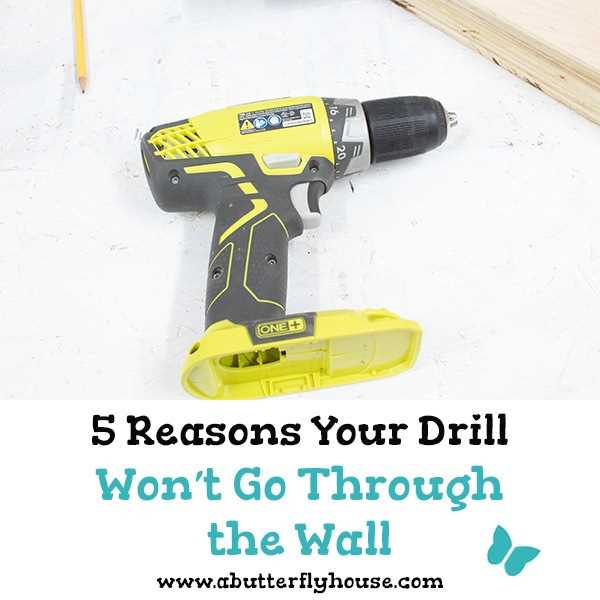
Drilling into a stud incorrectly can have several consequences. These include:
- Damage to the stud: When a drill is positioned incorrectly and penetrates the stud at an angle, it can weaken or even split the stud. This can compromise the structural integrity of the wall and may require extensive repairs.
- Damage to pipes or electrical wiring: Studs often contain pipes or electrical wiring running through them. If a drill hits one of these, it can cause leaks, electrical shocks, or even start a fire. It is crucial to identify the location of pipes and wiring before drilling into a stud.
- Ineffective anchoring: The purpose of drilling into a stud is usually to anchor something securely to the wall. If the drill is not properly aligned with the stud, the anchor may not hold as intended. This can result in a loose or unstable fixture, posing a safety risk.
- Time and cost of repairs: If drilling into a stud goes wrong, it will likely require repairs. This can involve patching holes, replacing damaged studs, fixing pipes or wiring, and repainting the wall. These repairs can be time-consuming and costly, especially if professional help is needed.
It is important to take the necessary precautions and ensure proper drilling techniques to avoid these consequences when working with studs. This includes using a stud finder to locate the precise position of the stud, using the correct size and type of drill bit, and drilling straight into the stud without applying excessive force.
Alternative Ways to Hang Objects on Stud Wall
If you find that you can’t drill into a stud on your wall, there are several alternative ways to hang objects securely:
1. Wall Anchors
Wall anchors are a great alternative to drilling into studs. They come in various sizes and types, such as toggle bolts or plastic anchors. You’ll need to drill a hole into the drywall, insert the anchor, and then screw your object into the anchor. Make sure to select the appropriate anchor size for the weight of the object you want to hang.
2. Picture Hanging Strips
Picture hanging strips are adhesive strips that are specifically designed to hang pictures and other lightweight objects on walls. They provide a strong hold and can be easily removed without damaging the wall. Simply affix the adhesive strips to the back of your object and press it firmly against the wall.
3. Command Hooks
Command hooks are another adhesive option for hanging objects on stud walls. They come in various sizes and are capable of holding different weights. Command hooks are easy to install and remove, and they don’t leave any residue behind when removed.
4. Over-the-Door Hooks
If you’re looking to hang something on a stud wall but want to avoid drilling altogether, consider using over-the-door hooks. These hooks are designed to hang over the top of a door and can be used to hang lightweight objects like towels, coats, or bags. Just make sure that the door can still close properly with the object hanging on the hook.
5. Adhesive Mounting Strips
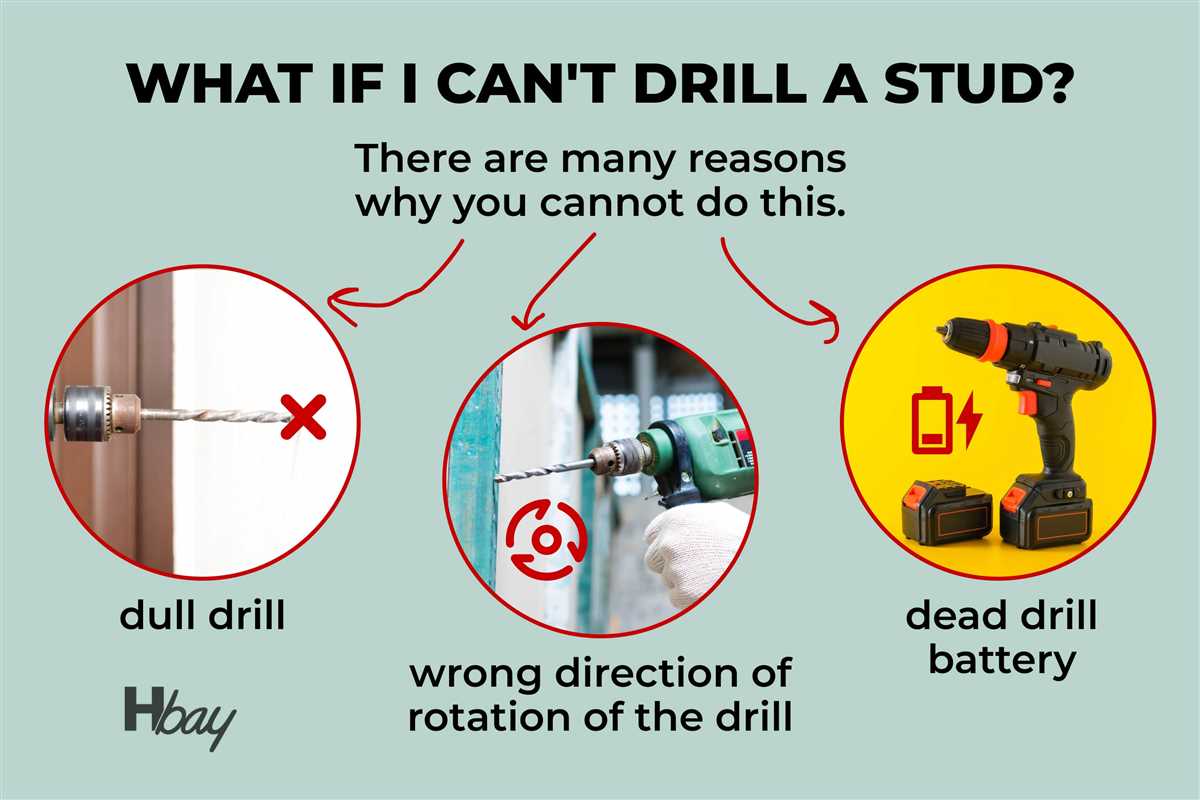
Adhesive mounting strips are another alternative for hanging objects on stud walls. These strips have adhesive on both sides and work well for lightweight objects like small frames or decorations. Simply attach the strips to both the wall and the object, and press them firmly together.
6. Freestanding Shelving Units
If you’re unable to drill directly into a stud but still need more storage space, consider using freestanding shelving units. These units can be placed against the wall and don’t require any installation. They provide a stable and secure way to display or store objects without the need for drilling.
7. Command Strips for Mirrors
If you want to hang a mirror on a stud wall, use mirror-specific command strips. These strips are designed to securely hold mirrors of various sizes and shapes. Follow the instructions provided with the strips to attach them to the mirror and mount it on the wall.
8. Pegboards
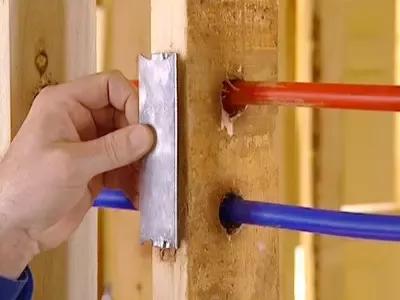
Pegboards are a versatile option for hanging objects on stud walls. By attaching a pegboard to the wall, you can easily hang and organize tools, accessories, and other items using hooks or pegs. This option works well for garages, workshops, or any space where you need to maximize storage and organization.
9. Tension Rods
If you’re looking to hang curtains or other lightweight fabric objects on your stud wall, tension rods are a great option. These rods can be easily adjusted to fit the width of your wall and create a convenient space for hanging curtains without the need for drilling.
10. Magnetic Hooks
For certain metal objects, magnetic hooks can provide a simple and effective solution for hanging on stud walls. These hooks use strong magnets to securely hold items like keys, utensils, or small tools. Simply attach the magnetic hook to the wall, and hang your metal objects.
Remember, it’s important to consider the weight and size of the object you want to hang when choosing an alternative method. Always follow the instructions provided by the manufacturer for proper installation and weight limits.
Importance of Professional Assistance
When encountering difficulties drilling into a stud, it is important to consider seeking professional assistance. There are several reasons why professional help can be beneficial in such situations.
Expertise and Experience
Professional contractors and handyman have years of experience working with various types of materials and structures. They have the knowledge and expertise to identify potential issues or obstacles when drilling into a stud. They know how to navigate around electrical wiring, plumbing, or other hidden objects behind the wall, ensuring that the drilling process is done safely and effectively.
Specialized Tools and Equipment
Professional assistance often comes with access to specialized tools and equipment that are designed for the task at hand. These tools can make drilling into studs easier and more efficient. Professionals may have stud finders, high-powered drills, or even sonar devices to accurately locate and mark the studs, reducing the risk of drilling into the wrong area or damaging the structure.
Safety and Liability
Drilling into a stud improperly can cause significant damage to the wall or even create safety hazards. Professionals understand the importance of safety precautions and are trained to minimize risks. Hiring a professional helps mitigate liability as they are responsible for any damages or accidents that may occur during the drilling process.
Time and Convenience
Attempting to drill into a stud without professional help can be time-consuming and frustrating. It often involves trial and error, multiple attempts, and the risk of damaging the wall. By hiring a professional, you can save time and ensure that the job is done correctly without any unnecessary delays or headaches.
Overall, seeking professional assistance when facing difficulties drilling into a stud is a wise decision. Their expertise, experience, access to specialized tools and equipment, focus on safety, and ability to save time all contribute to a successful drilling project.
FAQ:
Why can’t I drill into a stud?
Drilling into a stud can be difficult for several reasons. It could be because you are using the wrong type of drill bit or the wrong size of drill bit. It could also be because you are not using enough pressure when drilling or you are not drilling at the right angle. Additionally, there may be other materials, such as metal or pipes, behind the stud that are making it difficult to drill through.
What should I do if I can’t drill into a stud?
If you are having trouble drilling into a stud, there are several things you can try. First, make sure you are using the right type and size of drill bit for the job. You may also want to try applying more pressure when drilling or adjust the angle at which you are drilling. If none of these methods work, you may need to use a different type of anchor or fastener to secure your item to the wall.
Is it possible to drill into a stud without damaging it?
Yes, it is possible to drill into a stud without damaging it. One way to do this is by using a stud finder to locate the exact position of the stud before drilling. This will help you avoid drilling into any pipes or electrical wires that may be behind the stud. Additionally, using the correct size and type of drill bit, as well as applying proper pressure and drilling at the correct angle, can help prevent damage to the stud.
What are the consequences of drilling into a stud?
Drilling into a stud can have several consequences. If you drill into a stud without using the correct type or size of drill bit, you may not be able to create a hole or it may be too large or uneven. This can make it difficult to securely attach anything to the stud. Additionally, if you drill into a stud without first locating any pipes or electrical wires that may be behind it, you can risk damaging these utilities, leading to costly repairs and potential safety hazards.
Video:











